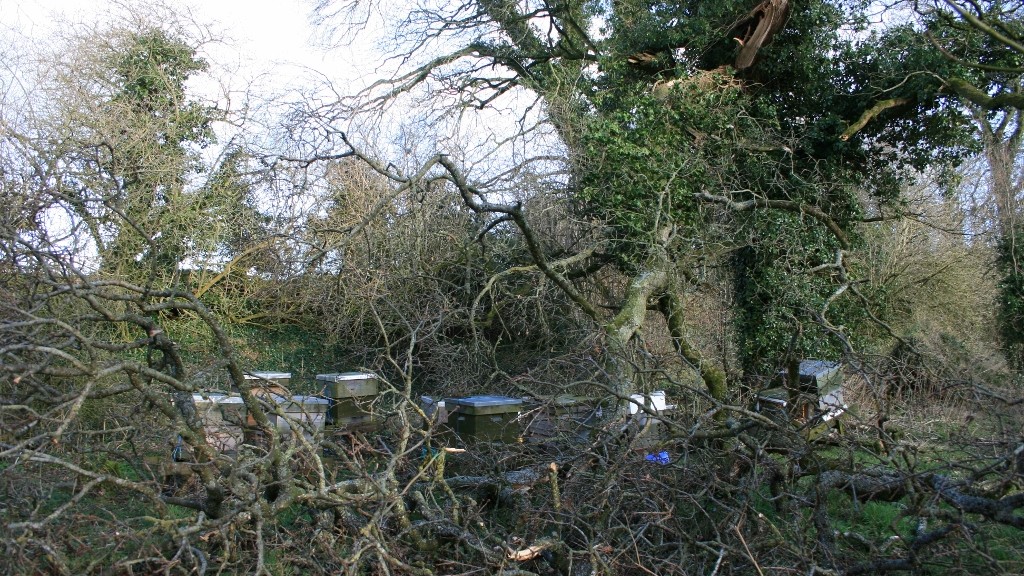The Latin, or family name for the European Honeybee is Apis mellifera. The species occurs from southern Scandinavia and the British Isles south across Europe and into Africa and Eastwards all the way to the Urals mountain range which forms a boundary between Europe and Asia. Within that enormous area there is correspondingly enormous climactic variability so little wonder 28 subspecies have evolved.
After the glaciers of the last ice age began to retreat northwards some 12.5 thousand years ago, they left behind barren scoured rock but soon plants began to colonise and with the plants came animals including insects and including little A.mellifera. These intrepid first bees were those which could tolerate colder weather, shorter summers and much more rain than the majority. Some of the pioneer characteristics were already present as natural variability within the species – they would have been hairier, thriftier and perhaps larger. As these bees continued to move northwards these features and others would have been further honed by the weather and the landscape as conditions became harsher. In addition, others would have occurred by natural mutations and if they conferred an advantage they would have persisted and indeed these too would have become further refined. These adaptations would have served to isolate these bees and the isolation would have led to even more deviation from the parent species.
Eventually the features of these bees became so distinct that they became indentifiable as a subspecies – Apis mellifera mellifera. Along with the visible features were behavioral characteristics which allowed them to interact more effectively with their surroundings. As this process continued over the next 12 thousand years the whetstone of evolution created for A.m.mellifera a behavioral and morphological ecotype which was as ecologically effective as it was possible to be. These features were to the bees like an organised bundle of razor sharp tools – all the right tools – but loosely bundled so that they could be dispersed with cross breeding, which is less than ideal. But then mother nature didn’t bargain for the beekeeper.
Imagine a carpenter as an evolved ecotype! The best carpenters would be those born with all the right tools while the bad ones would go extinct. Imagine then a brilliantly evolved carpenter interbreeding with a car mechanic/plasterer hybrid. Instead of the required set of razor sharp chisels, the resulting hybrids arrive with – say, a ring spanner, 2 chisels, a car jack and 6 assorted plasterer’s trowels and a saw.
But go back to the carefully evolved carpenters, not the hybrids. Within that multitude of correctly tooled-up individuals would be the full spectrum of ability – from the genius to the fool. It’s the same with bees – the native bee is an ecologically tooled-up cohort and within the full spectrum of ‘ability’ is all the variability we need to breed from. Native stocks will breed true. Native bee bred with Native bee will beget native bees all equipped as they should be and not with some mixed bag of swarm triggers picked up in… Germany, drone congregation instincts from… the Alps and wintering behaviour from… where… Italy?
Doesn’t make sense does it? No wonder crossed bees are cross bees.
Great article by John Dews here http://www.dave-cushman.net/bee/thebestbee.html
Copyright © Beespoke.info, 2014. All Rights Reserved.




